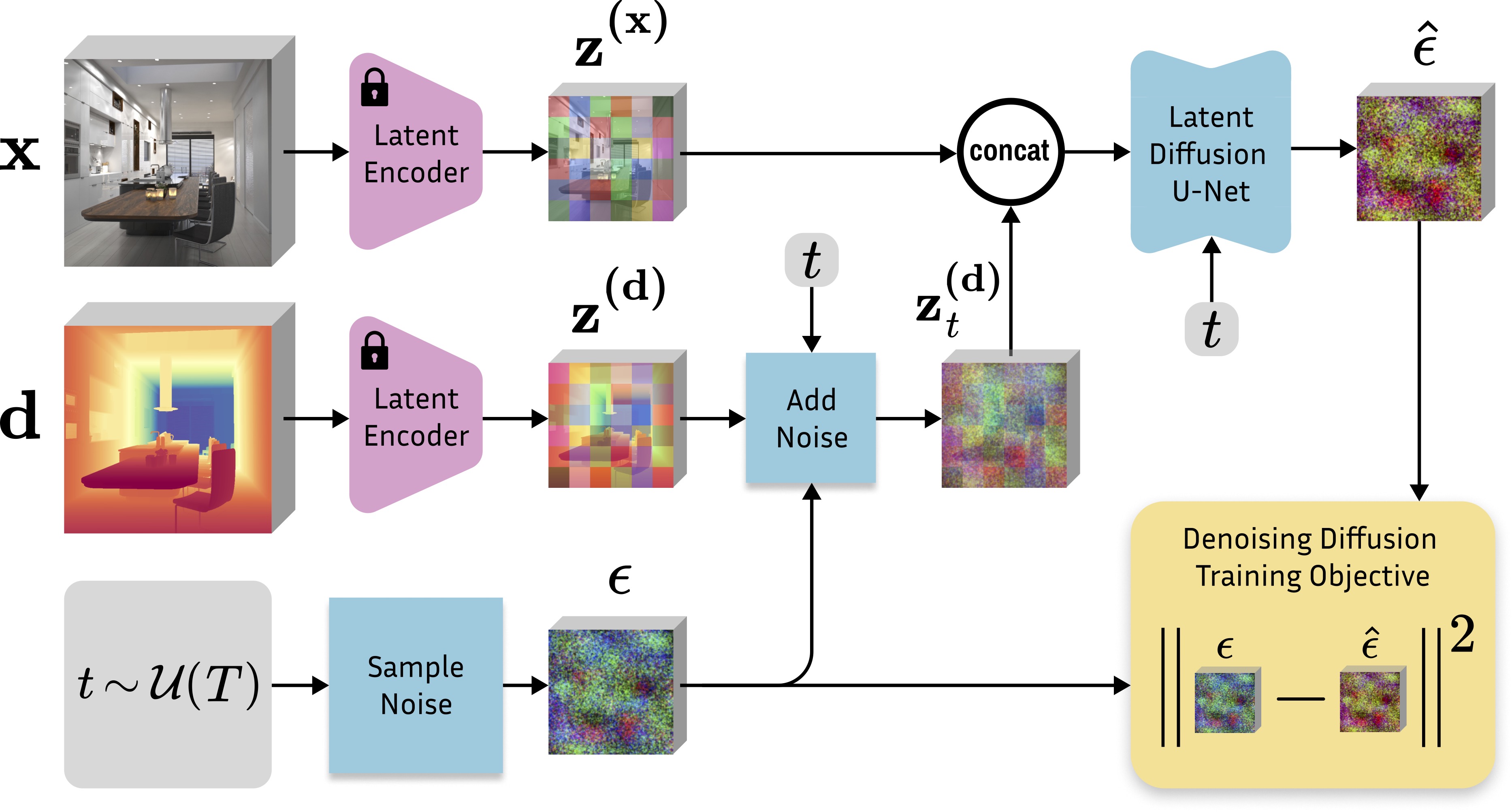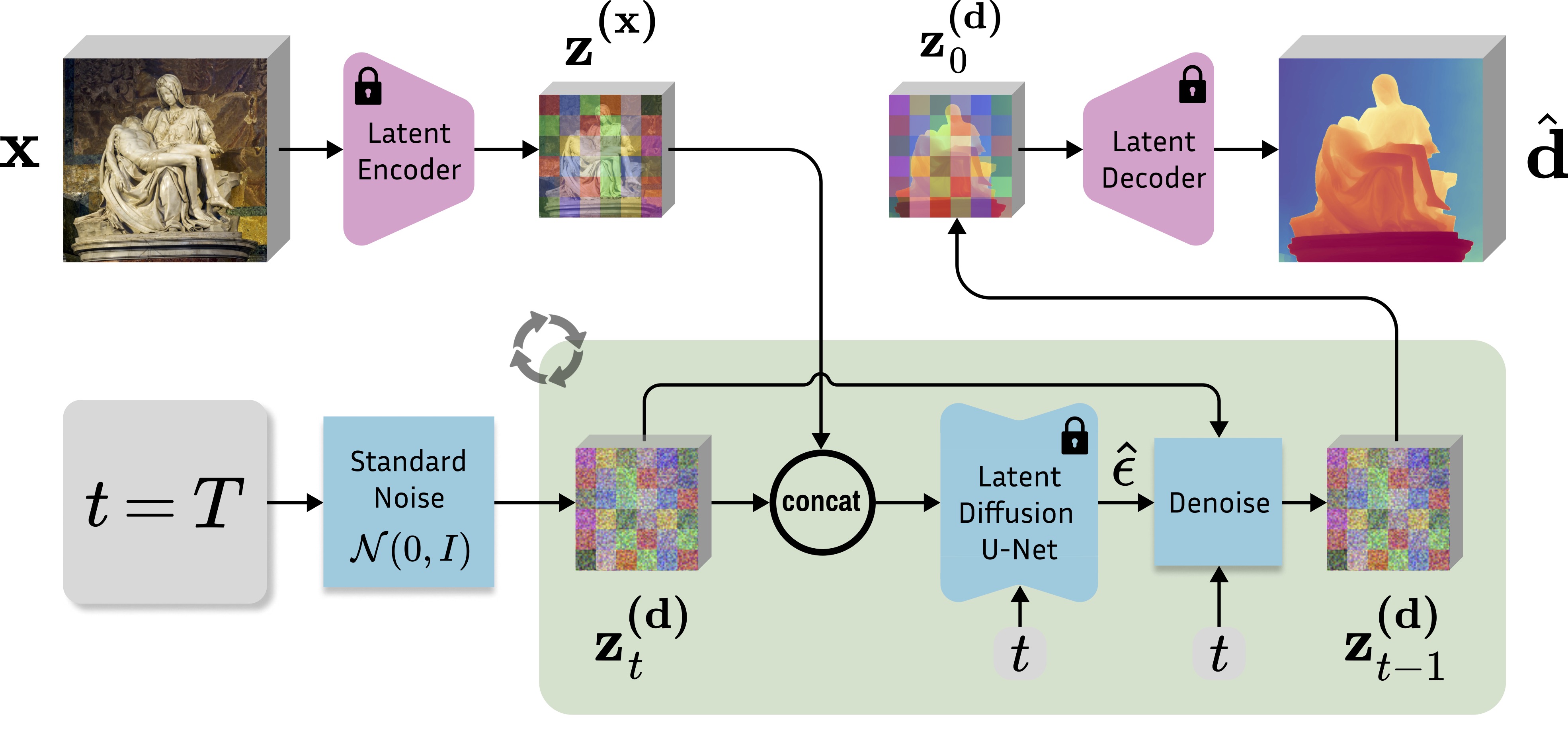We present Marigold, a diffusion model and associated fine-tuning protocol for monocular depth estimation. Its core principle is to leverage the rich visual knowledge stored in modern generative image models. Our model, derived from Stable Diffusion and fine-tuned with synthetic data, can zero-shot transfer to unseen data, offering state-of-the-art monocular depth estimation results.
The gallery below presents several images from the internet and a comparison of Marigold with the previous state-of-the-art method LeRes. Use the slider and gestures to reveal details on both sides.
Starting from a pretrained Stable Diffusion, we encode the image

Given an input image

Quantitative comparison of Marigold with SOTA affine-invariant depth estimators on several zero-shot benchmarks. All metrics are presented in percentage terms; bold numbers are the best, underscored second best. Our method outperforms other methods on both indoor and outdoor scenes in most cases, without ever seeing a real depth sample.

Refer to the pdf paper linked above for more details on qualitative, quantitative, and ablation studies.
@InProceedings{ke2023repurposing,
title={Repurposing Diffusion-Based Image Generators for Monocular Depth Estimation},
author={Bingxin Ke and Anton Obukhov and Shengyu Huang and Nando Metzger and Rodrigo Caye Daudt and Konrad Schindler},
booktitle = {Proceedings of the IEEE/CVF Conference on Computer Vision and Pattern Recognition (CVPR)},
year={2024}
}